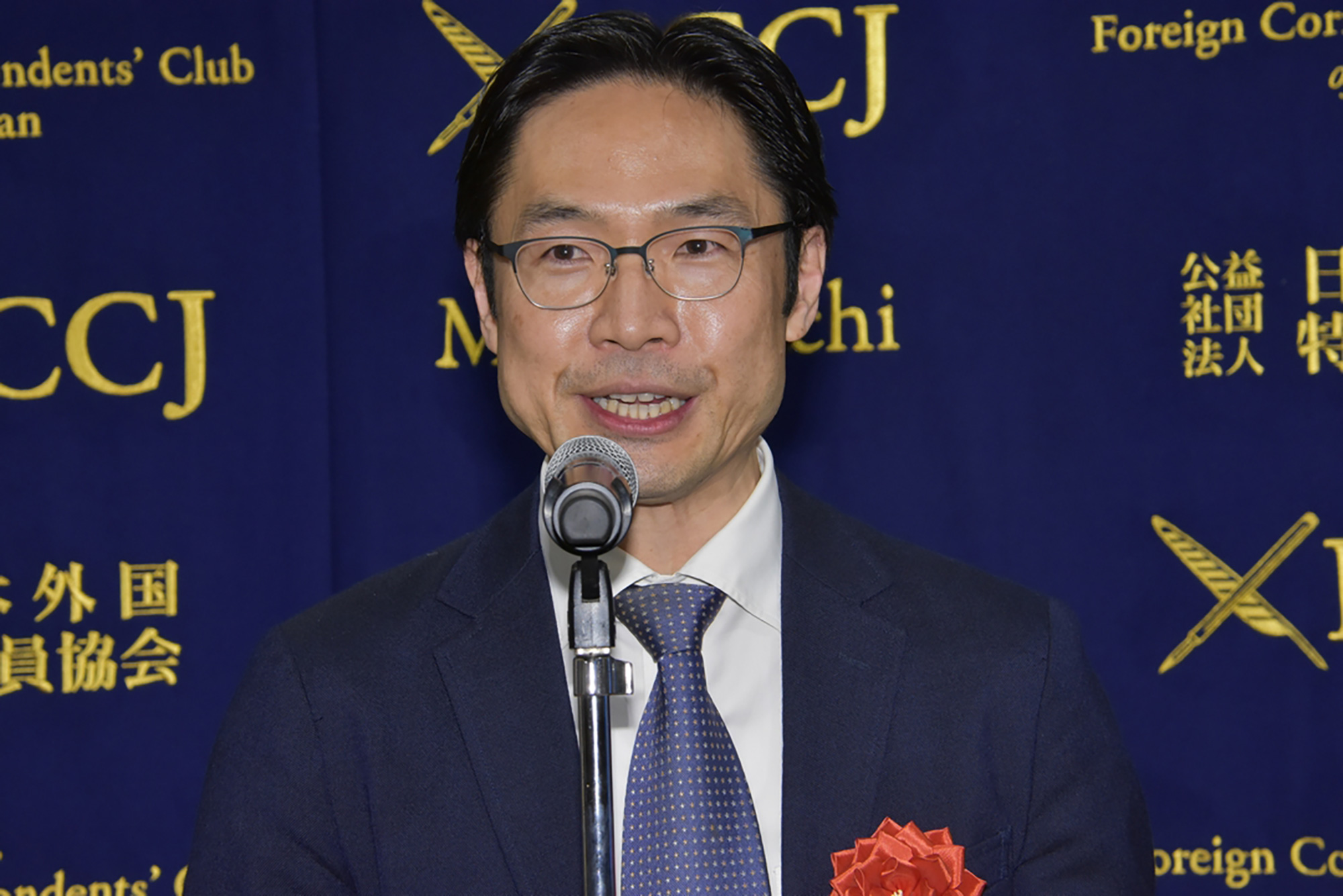Issue:
January 2024
Nikkei Asia is taking regional news to a global audience, its editor-in-chef tells FCCJ anniversary event

The role of a foreign correspondent is usually thought to be that of telling their readers what is going on in the country to which they are assigned. But they can find themselves performing a different and wider role.
Shin Nakayama, editor-in-chief of Nikkei Asia, has found himself in this situation since he moved into the editor’s chair at the English-language publication in April this year.
He is presiding over a journal that helps people in Asia understand what is going on in their own countries. This is the mark of sound journalistic principles on the part of Nakayama and the paper he represents. It is also recognition that press freedoms are not universally respected in Asia and that, on occasion, “outside” voices are needed to tell it like it is.
Nakayama explained his commitment to this belief when he appeared as guest speaker at the FCCJ’s 78th anniversary party on December 1. As a former correspondent of the Hong Kong-based Far Eastern Economic Review (FEER), which had a similar mission, I sympathized with his views.
Nakayama paid tribute to the (now defunct) FEER during his address. There were, he recalled, once some “quality Asian publications” such as the Far Eastern Economic Review and Asia Week that carried the torch for press freedom. “But they don’t exist anymore.”
“We have such an ambitious mission ahead of us, although we have only been publishing for just 10 years” added Nakayama, who joined the Nikkei in 1997 and has been reporting on political issues for over 20 years, serving as a correspondent in Washington, where he covered the White House, the State Department, the Pentagon, and Congress.
Nikkei Asia, which combines a weekly magazine with a website, is part of Nikkei, Inc., which also owns the Financial Times. It was known as Nikkei Asian Review when it was launched in 2013, taking its current title in 2020.
“Our main goal is to cover Asian news from an Asian perspective, rather than covering Japanese news from a Japanese perspective, and deliver it to the entire world,” Nakayama said. “We are trying to be the publication where you can read the news from all over Asia.
“It has only been 10 years since we started this business model, so it is still a trial-and-error process. Each country we cover has its own domestic media, so it is not easy to compete with them. But our mission is different from theirs. Our mission is to bring that news to a global audience.
About half of its readers are in Asian countries outside Japan, such as Singapore, the Philippines and Malaysia. And 35% are in North America. Japanese readers making up less than 10% of the readership. “The way we cover the story and the way we write the article must be different from those for domestic readers,” he said.
“On the other hand, we have also found some interesting trends in our readers’ behaviour. This is particularly noticeable in South-East Asian countries, where the news about each country is still best read in that country.
“This means people in Vietnam want to read news about Vietnam on Nikkei Asia, and people in Singapore want to read news about Singapore on our website. Initially, we thought they would want to read news from different countries, such as neighbouring countries, but this does not seem to be the case.
“It is difficult to know the exact reason for our readers' behaviour, but we can assume that perhaps there is an expectation that Nikkei Asia will report the news that the domestic media are not reporting, or that it will provide a different perspective on news compared to their domestic media.
“Unfortunately, press freedom in Asia isn't universally guaranteed yet. Several countries tightly control the press or attempt to influence media coverage to conform to state-controlled narratives.”
Nakayama paid tribute to the FCCJ’s role in helping protect press freedom. “The FCCJ always boldly tries to cover many issues that the Japanese mainstream media is reluctant to cover, such as the Johnny Kitagawa sexual abuse issue or the Unification Church scandal,” he said.
“As a journalist who worked in a Japanese newspaper for many years, I know that there are so many issues in Japan that are not covered by the Japanese mainstream media, and the FCCJ has always provided the opportunity to understand Japan better.”
Anthony Rowley is a columnist and contributor for the South China Morning Post.

